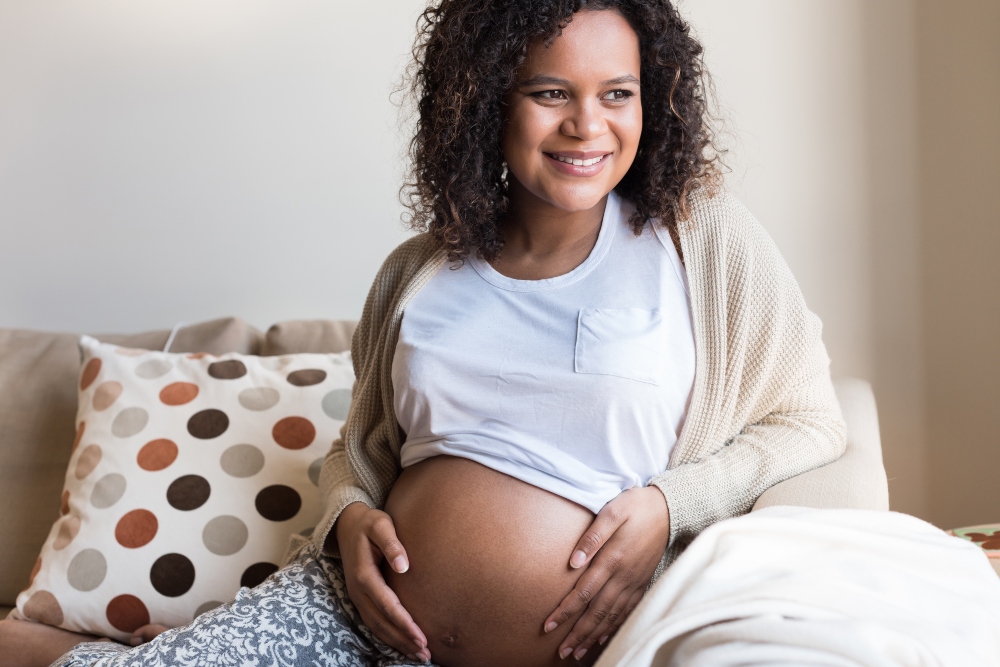Table of Contents
How to Check Yourself for Diastasis Recti After a Baby
Pregnancy takes an incredible toll on the human body. No place is this more evident than at the abdomen.
The additional weight and pressure of the amniotic fluid and a growing baby places an extraordinary amount of pressure on the abdominal muscles.
In many cases, the gradual changes that occur during gestation leave women with little more than stretch marks, sagging abdominal skin, and short-term skin discoloration.
At other times, however, excess pressure can cause the rectus abdominis or “six-pack” muscles to partially or fully separate.
This leaves new mothers with a noticeable pooch that’s unresponsive to targeted exercises.
Called diastasis recti, this condition can additionally cause persistent problems with constipation, bloating, and lower back pain.
If you’ve just had a baby and are worried that you might need diastasis recti treatment, you can use the four tips below to check yourself and arrange any next steps.
Look for the Common Signs of Diastasis Recti
While it’s certainly common to have around, soft pooch after having a baby, your body should gradually start moving closer to its pre-pregnancy condition in the weeks and months after you give birth.
If you’ve been slowly resuming your former exercise routine and have noticed significant changes in every area apart from your stomach, you may have some manner of muscle separation at the mid-abdomen.
It’s also important to pay attention to your bowel movements. Many women suffer from constipation immediately after childbirth.
Constipation can be especially problematic for new moms who’ve received epidurals for pain management during labor.
However, if your bowel movements don’t normalize within one week, this could be a sign of problems.
Try eating more fiber, drinking more fluids, and engaging in mild, cardiovascular exercises. When these efforts fail to get your bowels moving, check for bloating and an inability to maintain good posture.
It’s also important to be aware of any significant changes in incontinence. Light bladder leakage is a common sign of diastasis recti.
Perform a Slight Sit-up Movement With Your Hand on Your Belly
One very common sign of diastasis recti is the inability to effectively engage the muscles at the mid-abdomen.
The best way to check this is by attempting to perform a slight sit-up. Lie flat on your back with your knees bent and place one hand on your belly while using the other to gently support your head.
Slowly raise your shoulders off the floor and see whether your abdominal muscles flex and tighten as they normally would.
If your mid-section remains soft and flat, it’s likely that you have diastasis recti. Check for a slight gap between your abdominal muscles as well.
According to Every Mother, this gap will be approximately one inch wide.
Check for Abdominal Coning
Checking for evidence of abdominal coning is an easy way to determine whether or not you’ve got diastasis recti.
When the muscles at the mid-portion of the abdomen separate, this can dramatically change how your belly looks regardless of whether you’re sitting or standing.
In severe instances of diastasis recti, the intestines can actually start moving closer to the skin through the opening that’s been created by muscle separation.
This gives the belly a decidedly ridged appearance. When coning occurs, the middle portion of the belly arches out to create a cone-like shape.
You can stand in front of a mirror with your shirt off to inspect your tummy from all sides.
Take Stock Of How Abdominal Changes Are Affecting Your Everyday Movements
Your abdominal muscles both oppose and support your spine. When these muscles aren’t sufficiently strong, or when they’re unable to engage, your lower back muscles have to do more work.
When you check your abdomen for coning, pay attention to how you stand. Is it difficult to maintain good posture?
Is good posture impossible to achieve at all? These are signs that your rectus abdominis muscles are unable to do their job.
Listen to your body as you perform simple, daily chores like washing the dishes or picking your baby up from the changing table.
Mild but persistent aches in your lower back and hips could mean that other areas of your body are having to compensate for your injury.
Identifying and learning how to check for diastasis recti can be incredibly empowering. Many women with this condition spend weeks and even months believing that this jarring change to their abdomens is a natural part of the post-partum experience and one that they’ll simply have to learn to live with.
In reality, however, there are a number of safe and all-natural ways to correct it.
Once you know what you’re dealing with, you can take steps to start repairing and rebuilding your midsection for increased strength, greater confidence, and improved comfort.
- How Primary Care Doctors Are Your First Line of Defense - December 23, 2024
- Live-In Caregiver Jobs: Providing Support, Building Bonds - December 19, 2024
- Caring for Your Porcelain Veneers: Tips for a Lasting Smile - November 12, 2024
